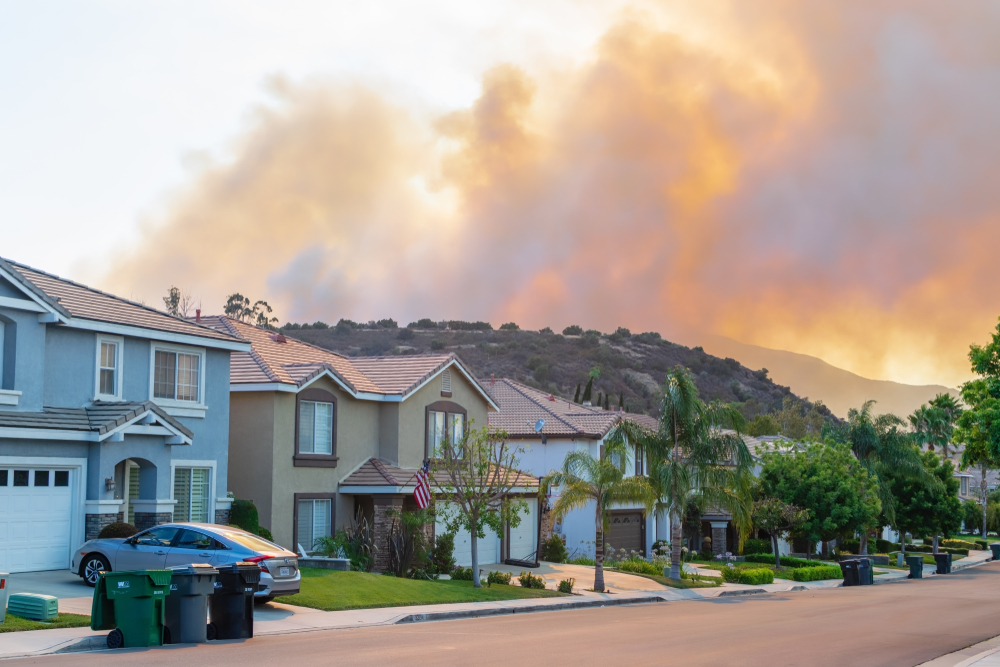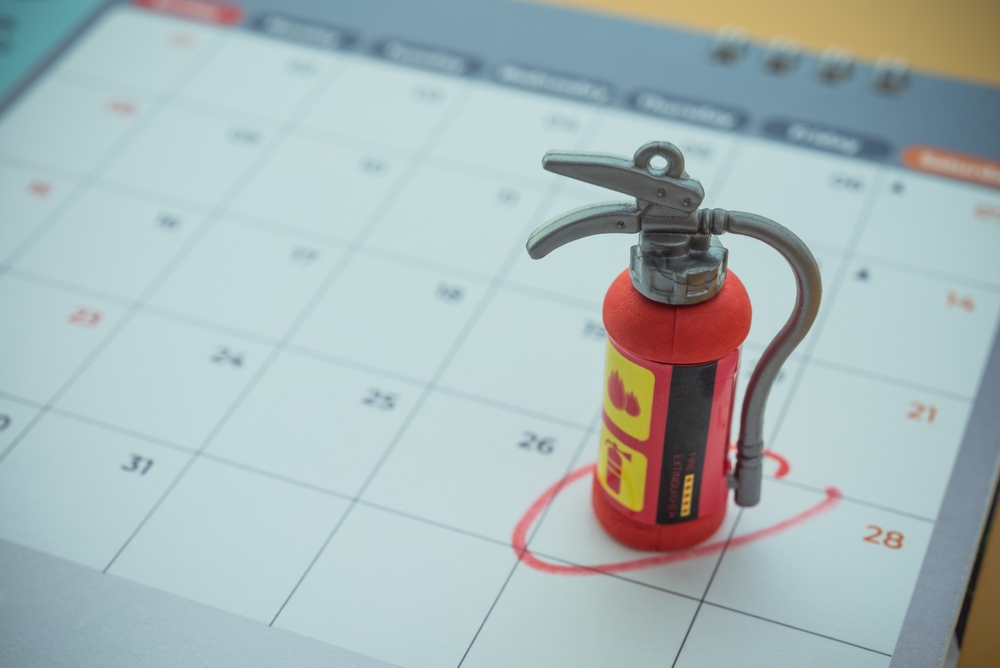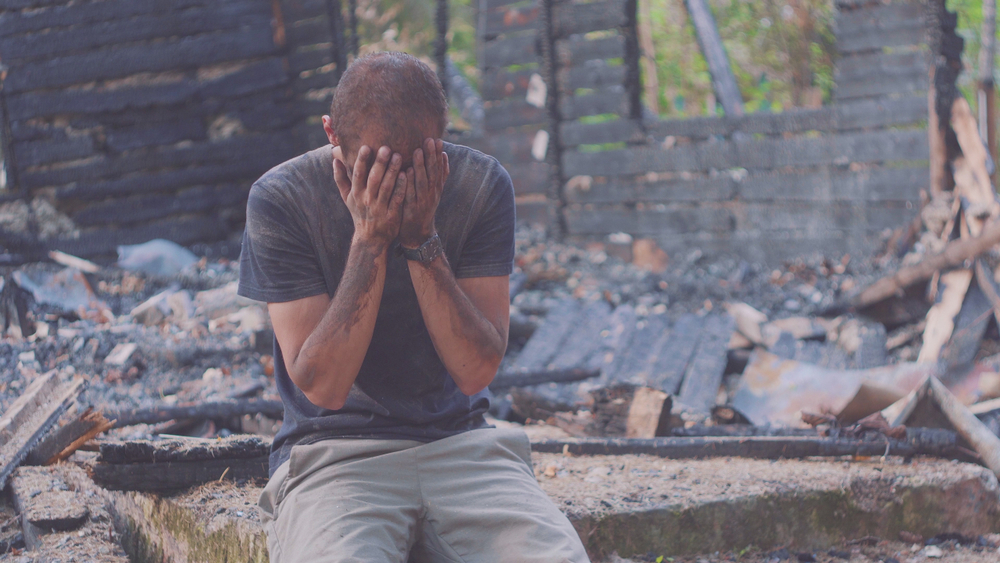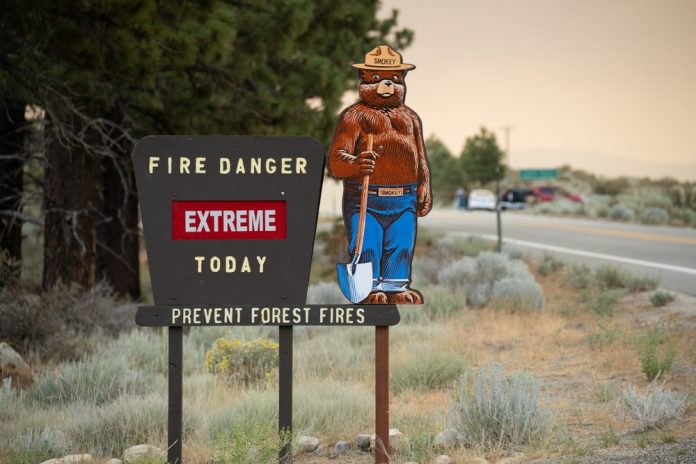California bleeds incredible landscapes and mild weather, and it is one of the biggest economies in the world; no wonder folks continue to look at this state and consider moving in. While California offers stunning coastal living, potential homeowners should be aware of the unique challenges that come with it. The state’s natural beauty is accompanied by risks such as wildfires, floods, earthquakes, and droughts, which are important considerations for anyone planning to settle in the area. Understanding this aspect of living in wildlife-urban interface zones for first-time buyers allows them to make informed decisions and protect their investment.
This guide goes into one specific natural disaster: wildfires. It outlines the growing disaster risks of fires that first-time homebuyers need to know and provides practical tips for preparing financially and physically for life in the Golden State.
Wildfires: Mitigating a Growing Threat
California’s dry climate, high winds, and expansive vegetation make it one of the most wildfire-prone regions in the U.S. Homes located in or around wildland-urban interface (WUI) areas—where residential developments border undeveloped land—have the highest risk. These areas tend to be highly populated and home to critical infrastructure.

Home Location and Safety Considerations
When looking for homes, be sure to keep the following in mind:
- House Materials: Houses built with fire-resistant materials- metal roofs or stucco siding- may be a better option than those with wood or vinyl.
- Defensible Space: California law requires a minimum of 100 feet of defensible space.
- Zone 0 (0-5 ft)- No flammable items such as dead leaves, mulch, or wooden furniture
- Zone 1 (5-30 ft)- Well-spaced plants, tree branches, and debris regularly cleared.
- Zone 2 (30-100 ft).- Thinned-out vegetation, clear underbrush, and horizontal spacing between shrubs and trees.
- Community Safety Ratings: More and more neighborhoods are starting to implement fire-mitigation plans or are designated as Firewise Communities, indicating the area is proactive in reducing wildfire risks.
How to Assess Wildfire Risk:
- Check CAL FIRE Maps: The California Department of Forestry and Fire Protection (CAL FIRE) gives you access to hazard severity zone maps to help homebuyers identify high-risk areas.
- Research Local History: Check out the area’s history of wildfires, including frequency and severity, which can be accessed through the local fire department.
- Learn About Firefighting Resources: Check proximity to local fire stations and assess the city or community’s preparedness for wildfire emergencies.
Beyond those zones are a diverse amount of microclimate. You’ve got the infamous Santa Ana winds in Southern California that go into December. The state’s wildlife threat is exacerbated by fuel moisture – or rather, lack of it. Extended heat waves are a growing concern, as are droughts that dry out the vegetation, giving more tinder or fuel for the fire. Compound that, with unpredictable rainfall patterns that swing back and forth between drought and heavy rains, California is always in a flurry.
California Wildfire Calendar

- Dry Season: May – October (statewide).
- Fire Season: June – November (Peak: September and October).
Did you check out the California Wildfire calendar above? At the time of writing (January 2025), California is being raved by wildfires, well outside the window of dry and fire seasons. Events like these fires underscore the persistent and escalating threat of this type of natural disaster in California.
Outside of the fire season, unseasonably warm temperatures and Santa Ana winds led to multiple regional fires. ABC News reported 19,000 acres scorched during the Palisades Fire, leading to the forced evacuation of over 100,000 residents.
What to Look for in a Fire-Resilient Home
If you’re coming from a place that didn’t have wildfires, you may not fully understand how the materials of a home affect its vulnerability to fire. For first-time homebuyers, looking into the structural details of a house is critical when planning for wildfire safety:
- Roofing: Noncombustible materials like metal, tile, or shingles offer better protection against ember attacks.
- Vent Systems: You’ll want to see tight-screened vents to prevent flying embers from entering attics and crawl spaces.
- Windows: Tempered glass is much more heat-resistant than regular glass, decreasing the chances of windows breaking from extreme heat.
- Eaves and Gutters: These areas should be constructed with noncombustible materials to minimize vulnerability.
- Decks and Patios: Look for fire-resistant materials such as concrete, stone, or tile for these outdoor spaces.
- Landscaping: Trees and shrubs are safe from the home, and there is nonflammable vegetation near the house.
- Fire Sprinkler System: This extra layer of protection can significantly reduce damage during fires. If the home doesn’t have built-in sprinklers, check how much you need to install one yourself.
Additionally, it’s essential to research the history of wildfires in the area and any measures the community takes to prevent and prepare for them. This includes evacuation plans and community fire prevention programs. High-risk areas may also have stricter building codes for new construction to ensure fire-resilient homes.
Insurance and Financial Planning
State Farm noted that between April 2021 and March 2022, the average wildfire paid claim was $224,000. These amounts are accurate, and there are two main implications for homebuyers. First is insurance challenges- securing homeowners insurance in these high-risk areas is challenging, and premiums can go well beyond $5,000 annually (imagine $400-500 a month on this expense alone).

That extra wildfire insurance premium is worth considering when purchasing a home in high-risk areas. Standard homeowner’s insurance often excludes coverage for damage caused by wildfires or adds on costly riders. Research specific policies or contact an insurance specialist for any questions after reading this guide. With insurance, it is always good practice to review your coverage regularly.
Here’s how you can ensure you’re prepared:
- Get a Wildfire Policy: Confirm that your homeowners’ insurance includes wildfire coverage and understand any limitations.
- Explore the FAIR Plan: If traditional insurance is unavailable in high-risk areas, California’s FAIR Plan offers basic coverage for wildfire-related damages.
- Understand Premium Costs: Fire-prone areas often have higher premiums, so factor these into your home buying budget.
Did you get the insurance? Great, but that’s just one aspect of living in your home. Remember that you’ll have the ongoing cost of maintaining a fire-resistant home. Regular gutter cleaning, tree trimming, and clearing debris from your roof are all necessary preventative measures that can help protect your home from wildfires. While these costs may seem high in time and budget constraints, they pale compared to the potential rebuilding costs after a devastating fire.
Preparing Your Home for Wildfires
Once you’ve purchased your home, proactive preparation is key to reducing wildfire risk:
- Maintain Defensible Space: Clear at least 30-100 feet of vegetation around your home. Again, it’s the law.
- Invest in Fire-Resistant Landscaping: To minimize risk, use fire-resistant plants and hardscaping materials like gravel.
- Install Sprinkler Systems: Beyond the fire systems in the home, be sure to expand into the yard. Exterior sprinklers help hydrate the property’s perimeter during fire seasons.
- Emergency Plans: Create an evacuation plan for your household and keep an emergency go-kit accessible. See the helpful resources below.
Community Benefits and Fire Relief Programs
Given the number of affected communities, it should be no surprise that there are strong community efforts focused on preventative measures and recovery. Fire preparedness goes beyond an individual home.
Communities and fire stations offer education on fire safety with regular workshops. Spreading good vibes, communities also have local volunteer groups that help with evacuation plans and support for those impacted by wildfires. Beyond that, there are also fire relief programs that offer assistance with disaster recovery efforts. Familiarize yourself with them.
There are also several state and local resources. California provides resources, grants, and subsidies to help homeowners fortify their properties. Dig into these resources, and after closing on your home, get involved in these programs to help protect it and strengthen the community’s resilience to future wildfires.
Ready to Join a Community and Become a Homeowner?
You’ve read this, seen the news, and are still ready to jump into the game home-buying game! Knowing about wildfires can be a very revealing experience, especially for first-time homebuyers. Gaining an overview of considerations before buying a home, preparedness tips, and getting support after purchasing your home means you’re on your way to living responsibility, bearing in mind your well-being balanced with your financial capacity.
Still have questions? Check out the following section of resources!
Helpful Resources
- CAL FIRE (California Department of Forestry and Fire Protection)– Up-to-date fire hazard maps, incident reports, evacuation planning tools, and safety tips for wildfire preparedness.
- California FAIR Plan Association– A last-resort insurance option for homeowners in high-risk wildfire areas.
- FEMA (Federal Emergency Management Agency)– Helpful disaster preparedness guides, financial assistance programs, and flood zone maps to help homeowners in vulnerable areas.
- InciWeb – Incident Information System– A national database for tracking active wildfire incidents, provides updates on containment efforts, evacuation notices, and road closures.
- Ready for Wildfire App (CAL FIRE)– A free app that delivers real-time wildfire alerts, evacuation maps, and step-by-step guides for creating defensible space around your home.
- NFPA Firewise USA® Program– Find communities that organize and implement fire safety measures to reduce wildfire risks in their residential areas.
- AirNow – Real-time air quality updates during wildfire events.
- State Farm Wildfire Insurance– A leading insurer offering guidance on wildfire-resistant home upgrades and coverage for fire-prone regions.
- LA County Fire Department – Ready, Set, Go! Program– Education for residents on prep for wildfires, including evacuation plans, safety checklists, and home-hardening tips.
Needing extra guidance in finding the safest home for your family? Contact expert realtors or CAL FIRE consultants to plan your path toward stress-free homeownership in California. You’ve got this!


